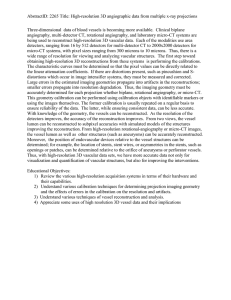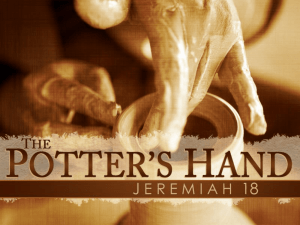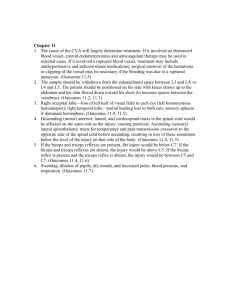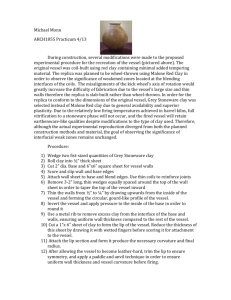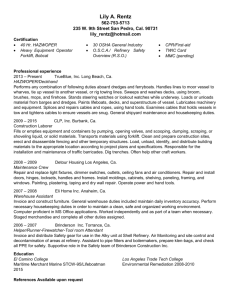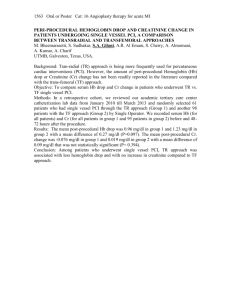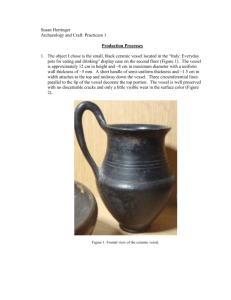Response to reviewers Reviewer 1: Thank you very much for your
advertisement
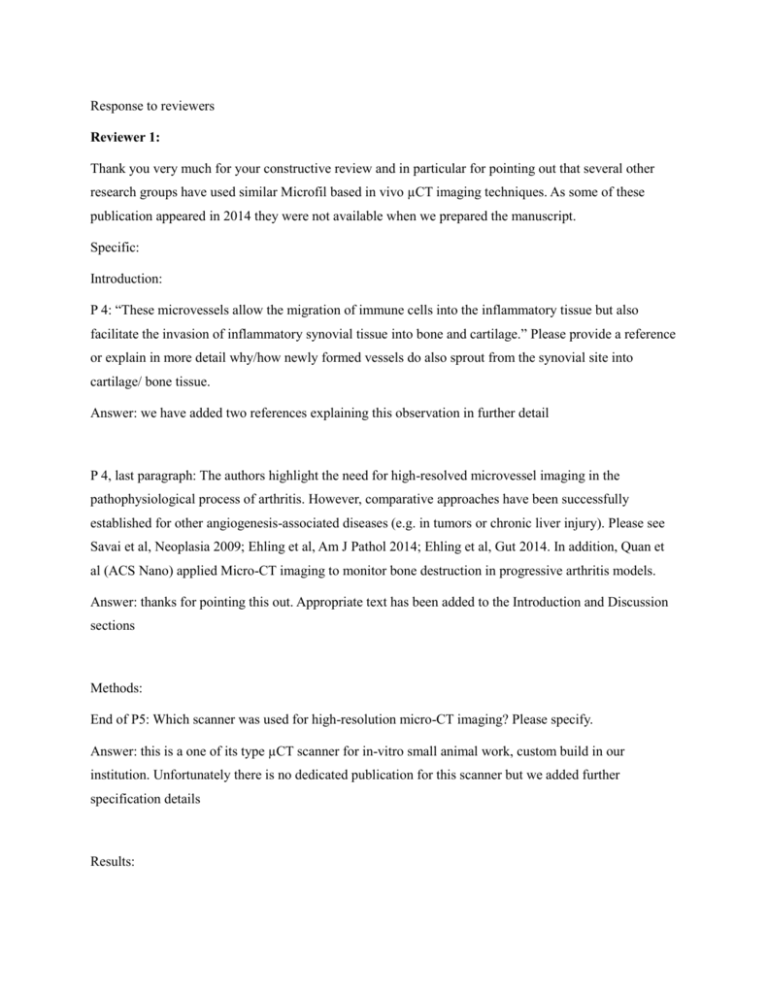
Response to reviewers Reviewer 1: Thank you very much for your constructive review and in particular for pointing out that several other research groups have used similar Microfil based in vivo µCT imaging techniques. As some of these publication appeared in 2014 they were not available when we prepared the manuscript. Specific: Introduction: P 4: “These microvessels allow the migration of immune cells into the inflammatory tissue but also facilitate the invasion of inflammatory synovial tissue into bone and cartilage.” Please provide a reference or explain in more detail why/how newly formed vessels do also sprout from the synovial site into cartilage/ bone tissue. Answer: we have added two references explaining this observation in further detail P 4, last paragraph: The authors highlight the need for high-resolved microvessel imaging in the pathophysiological process of arthritis. However, comparative approaches have been successfully established for other angiogenesis-associated diseases (e.g. in tumors or chronic liver injury). Please see Savai et al, Neoplasia 2009; Ehling et al, Am J Pathol 2014; Ehling et al, Gut 2014. In addition, Quan et al (ACS Nano) applied Micro-CT imaging to monitor bone destruction in progressive arthritis models. Answer: thanks for pointing this out. Appropriate text has been added to the Introduction and Discussion sections Methods: End of P5: Which scanner was used for high-resolution micro-CT imaging? Please specify. Answer: this is a one of its type µCT scanner for in-vitro small animal work, custom build in our institution. Unfortunately there is no dedicated publication for this scanner but we added further specification details Results: See above: Although micro-CT imaging and vessel tree simulation generate 3D data sets on which vessel size and density can optimally be quantified, the data should also be compared to 2D histological data (using conventional histological procedures) or 3D histological data (using advanced microscopy techniques), because histological analysis are still the gold standard for angiogenesis research. For methodological details, please see Ehling et al, Am J Pathol 2014; Pöschinger T et al, Invest Radiol 2014; Dobosz M et al, Neoplasia 2014. By applying the hybrid segmentation approach presented in this study, is the quantification of vessel branching also possible? Answer: we agree that histological data are still the gold standard but as in the quantification of bone micro-architecture 2D and 3D techniques often do not compare too well because really different information is captured. 3D histological sectioning is very tedious. Of course, as you indicate, there are indirect comparisons as in the publication by Pöschinger but they did not compare vessel structure. Therefore we used a simulation approach. Corresponding text has been added to the Discussion section. Discussion: Authors should address: What is the advantage of high-resolution visualization/ morphological characterization of arthritisassociated vascular changes/ angiogenesis in comparison to conventional joint imaging via MRI? Answer: Thanks for this comment which triggered a literature search. For your (and our information): To our best knowledge, there is no single publication showing vessel geometries of the (mouse) knee by MRI. This is due to the considerable limitations of MR by spatial resolution and resulting scan times. In the brain, optimal organ for MR angiography, super-high resolution angiography at 15.2T (two systems available worldwide) provide a spatial resolution of 50x50x50 µm spatial resolution in around 35 min. Even this would not be sufficient for the 15µ resolution of µCT. Moreover, a Medline search revealed that no other, more indirect, MR methods like DCE or perfusion, are published for mouse knee due to the above mentioned limitations of MRI. In the future, at 15.2T some insights in vascularization patterns of the mouse knee might be possible. We updated the discussion. Due to the fact that the presented method of high-resolution blood vessel visualization upon Microfil perfusion per se is not new (also the imaging protocol seems to be newly established for experimental arthritis models), the authors should discuss their methodological work in a broader context of comparable high-resolution Micro-CT studies. Answer: Discussion was appended. Figures: Fig 2: “Accuracy of (…) vessel connectivity measured as number of connected vessel segments” vs. page 11: “…measures of connectedness of the vessel tree were not obtained” # What is the differences between “vessel connectivity” and “connectedness”? Please specify. Answer: clarified in text. We indented to say that measures of connectedness of the vessel tree should include number of nodes and branches, whereas we only provided the vessel number, even without trying to connect artificially (i.e. due to the imaging/image processing method) disconnected vessel branches. Text of the manuscript was modified accordingly Fig 5: Main blood supplying vessels (e.g. popliteal artery) should be highlighted (by arrows) in the images to provide the reader with basic anatomical landmarks of the knee joint Answer: we added an image where femur, tibia and fibula are shown together with the vessel tree. Thanks for the suggestion Reviewer 2: I have read many times the manuscript proposed by S. Gayetskyy et al and I must admit that I do not understand at all their works. It is a mix of technical and biological results. I do not understand their technical approach of vessel quantification. They do not provide an improved method compared to classical quantifications. Their microCT resolution is poor. Answer: This critique is a little difficult to answer. We agree that we presented a mix of technical and biological results but this was done on purpose to demonstrate that the technical results have biological relevance, perhaps even despite what the reviewer criticizes as poor resolution. We also think that our hybrid segmentation is a technical advancement and are not aware of corresponding work elsewhere. The presence of bone complicates the segmentation and therefore methods typically used in tumor research did not work in our case. We made this point more obvious in the Discussion section.
